The Jackson’s mongoose (Bdeogale jacksoni) is a species of mongoose found in montane forests in Kenya, Uganda, and Tanzania. It appears to be uncommon, and it has been listed as Near Threatened since 2008.
It has grizzled black and white fur that is long and thick. Yellowish flushes cover the cheeks, throat, and sides of the neck. The legs are dark brown or black, with a white bushy tail. It is a huge mongoose, with a head and body length of more than 50 cm (20 in) and a body weight of 2-3 kg (4.4-6.6 lb). It is primarily nocturnal and crepuscular, and it may be solitary. It consumes rodents and insects.
Jackson’s mongoose is found in central and southern Kenya and southeastern Uganda, where it has been observed at altitudes ranging from 300 to 3,300 m (980 to 10,830 ft) in the Aberdare Range, Mount Kenya, and Mount Elgon. It lives in lowland woods, bamboo forests, and montane forests. It was discovered in the Matundu Forest of Tanzania’s Udzungwa Mountains in 2002.
Jackson’s mongoose: Species Profile
COMMON NAME: Jackson’s Mongoose
SWAHILI NAME: Unknown
SCIENTIFIC NAME: Bdeogale jacksoni
TYPE: Mammal
FOOD: Jackson’s mongooses are carnivorous, feeding primarily on small vertebrates such as rodents, birds, reptiles, and insects. They may also consume fruits and other plant matter on occasion.
HABITAT: Jackson’s mongooses are found in a variety of habitats, including forests, woodlands, savannas, and grasslands. They are native to sub-Saharan Africa.
SIZE: Jackson’s mongooses have a body length of approximately 45 to 65 centimeters (18 to 26 inches), with a tail length of about 20 to 30 centimeters (8 to 12 inches). They weigh between 1.5 to 3 kilograms (3.3 to 6.6 pounds).
AVERAGE LIFE SPAN IN THE NATURAL HABITAT: In the wild, Jackson’s mongooses have an average lifespan of around 8 to 12 years. However, some individuals may live longer under favorable conditions.
ACTIVE: Jackson’s mongooses are primarily diurnal creatures, meaning they are active during the day. They are agile climbers and proficient runners, allowing them to navigate through different types of terrain in search of food and shelter.
GESTATION PERIOD: The gestation period for Jackson’s mongooses is approximately 60 to 70 days. Females give birth to litters of 2 to 4 pups, which are born in underground burrows or other concealed locations.
WEIGHT: Jackson’s mongooses typically weigh between 1.5 to 3 kilograms (3.3 to 6.6 pounds), making them medium-sized mammals. They have a slender body, short legs, and a pointed snout.
SIZE COMPARISON TO A 6-FT MAN: Jackson’s mongooses are smaller than a 6-ft man, with a body length of approximately 45 to 65 centimeters (18 to 26 inches). They are agile and adapted to their natural habitats, enabling them to move swiftly and efficiently.
Physical Features:
Jackson’s mongoose (Bdeogale jacksoni) is a medium-sized mongoose species with distinctive physical features. Here are the key aspects of its appearance:
- Size: Jackson’s mongoose has a body length ranging from 35 to 40 centimeters (14 to 16 inches) and a tail length of approximately 25 to 30 centimeters (10 to 12 inches). They weigh around 0.9 to 1.2 kilograms (2 to 2.6 pounds).
- Body Shape: These mongooses have a slender body with a long, bushy tail. Their body is well-adapted for agility and quick movements, allowing them to navigate their habitat with ease.
- Fur: The fur of Jackson’s mongoose is short and dense, providing effective insulation and protection against various weather conditions. The coloration of their fur varies from dark brown to reddish-brown, with lighter shades on the underparts.
- Facial Features: They have a pointed snout with a black nose and small, rounded ears. Their eyes are relatively small and positioned forward, providing them with good binocular vision.
- Striped Coat Pattern: Jackson’s mongoose is characterized by a unique coat pattern consisting of alternating dark and light stripes that extend along the length of its body. These stripes are more prominent on the back and sides, providing effective camouflage in their natural habitat.
- Claws and Paws: Their feet are equipped with sharp, non-retractable claws that aid in climbing trees and digging burrows.
Overall, Jackson’s mongoose has a sleek and agile body, along with its distinct striped coat pattern, which helps it blend into its surroundings and navigate its habitat effectively.
A. Sleek and Compact Body:
Jackson’s Mongoose possesses a sleek and compact body, perfectly adapted for life on the move. Its slender build allows for swift and agile movements, making it a formidable predator in its habitat. Its fur coloration varies from reddish-brown to gray, providing effective camouflage in its natural surroundings.
B. Prominent Facial Markings:
This species is characterized by its distinct facial markings, including a dark mask around its eyes and light-colored patches on its cheeks. These markings not only add to its visual appeal but also serve as a form of communication among individuals.
Habitat and Range:
Jackson’s Mongoose is primarily found in the savannas and woodlands of East Africa, including countries such as Kenya, Tanzania, and Uganda. It prefers areas with a mix of open grasslands and scattered trees, which provide suitable hunting grounds and refuge.
Behavior and Diet:
Jackson’s mongoose (Bdeogale jacksoni) is known for its fascinating behaviors and social dynamics. Here are some key aspects of their behavior:
- Nocturnal Activity: Jackson’s mongooses are primarily nocturnal, meaning they are most active during the night. They have adapted to this lifestyle to avoid competition and predation from diurnal animals.
- Social Structure: They are highly social animals, living in small family groups known as clans. A typical clan consists of an adult breeding pair and their offspring. These groups work together to defend territory and care for the young.
- Territorial Behavior: Jackson’s mongooses mark their territories using scent markings and vocalizations. They defend their territories from intruding individuals or rival clans through aggressive displays and vocalizations.
- Foraging Strategy: These mongooses are opportunistic feeders, consuming a variety of food sources. They primarily feed on small vertebrates like rodents, reptiles, and birds, as well as insects, fruits, and seeds. They use their sharp teeth and agile movements to capture and consume their prey.
- Communication: Jackson’s mongooses use a range of vocalizations, including growls, squeaks, and chatters, to communicate with each other. These vocalizations are important for coordinating group activities, alerting others to potential threats, and maintaining social bonds.
- Reproduction: Breeding pairs within a clan are usually monogamous, and both parents participate in raising the young. Females give birth to litters of 1 to 3 offspring, which are cared for by the entire clan. The young are weaned at around 8 to 12 weeks and reach sexual maturity at about one year of age.
- Agile and Curious: Jackson’s mongooses are known for their agility and curiosity. They are excellent climbers, capable of scaling trees and rocks to search for prey or escape from predators. Their inquisitive nature often leads them to investigate their surroundings and interact with objects in their environment.
Overall, Jackson’s mongooses exhibit complex social behaviors, have diverse foraging strategies, and display remarkable agility. These traits contribute to their survival and success in their natural habitats.
A. Agile Hunter:
Jackson’s Mongoose is a skilled and agile hunter, capable of capturing a variety of prey. It feeds on small mammals, birds, reptiles, insects, and even eggs. Its keen senses, sharp teeth, and powerful jaws make it a formidable predator in its ecosystem.
B. Solitary and Territorial:
This species is mainly solitary, with individuals staking out their territories to ensure sufficient resources and minimize competition. Males and females come together only for mating purposes, after which they separate and continue their solitary lifestyles.
Ecological Significance:
A. Rodent Population Control:
Jackson’s Mongoose plays a crucial role in regulating the population of small rodents within its habitat. By preying on rodents, it helps maintain a balance in the ecosystem, preventing overpopulation and the potential negative impact on vegetation and agricultural areas.
B. Seed Dispersal:
As Jackson’s Mongoose moves through its habitat, it inadvertently aids in seed dispersal. Seeds from consumed fruits are passed through its digestive system and deposited in different locations, contributing to the dispersion and germination of plant species.
Conservation Status and Threats:
A. Habitat Loss:
The encroachment of human activities, including agriculture, deforestation, and infrastructure development, poses a significant threat to the habitat of Jackson’s Mongoose. The loss of suitable habitats restricts its range and diminishes the availability of prey resources.
B. Human-Wildlife Conflict:
In areas where human populations intersect with the natural habitat of Jackson’s Mongoose, conflicts may arise. Livestock predation and perceived threats to crops can lead to retaliatory actions, resulting in the loss of individual mongoose and potential population decline.
Conservation Efforts:
A. Protected Areas:
The establishment and effective management of protected areas play a crucial role in the conservation of Jackson’s Mongoose. These areas provide a safe haven for the species, ensuring the preservation of its habitat and the maintenance of healthy populations.
B. Public Awareness and Education:
Raising awareness about the importance of Jackson’s Mongoose and its role in the ecosystem is vital for its conservation. Educational programs, community engagement, and ecotourism initiatives can help foster appreciation and support for the species, encouraging sustainable practices and minimizing human-wildlife conflicts.
Bdeogale jacksoni
Bdeogale Jacksoni (Jackson’s Mongoose) is a fascinating inhabitant of Africa’s savannas and woodlands, with its agility, hunting prowess, and ecological significance. By prioritizing habitat conservation, promoting coexistence between humans and wildlife, and raising awareness about its importance, we can ensure the survival of Jackson’s Mongoose and protect the delicate balance of African ecosystems for generations to come.
Jackson’s mongoose Adaptations
Jackson’s mongoose (Bdeogale jacksoni) has developed several adaptations that help it thrive in its natural habitat. Here are some of its notable adaptations:
- Slender Body: Jackson’s mongoose has a streamlined and slender body shape, allowing it to move quickly and navigate through narrow spaces. This adaptation is beneficial for hunting in tight spaces and evading predators.
- Sharp Teeth and Claws: The mongoose has sharp teeth and retractable claws that are well-suited for capturing and subduing prey. Its teeth are specialized for tearing through flesh and crushing bones, enabling it to efficiently feed on a variety of food sources.
- Keen Senses: Jackson’s mongoose has well-developed senses, including sharp vision, acute hearing, and a keen sense of smell. These adaptations help it detect potential threats, locate prey, and communicate with other members of its clan.
- Agility and Climbing Ability: This mongoose is highly agile and an adept climber. It can easily navigate through trees and rocky terrain, giving it an advantage when pursuing prey or escaping from predators.
- Cooperative Behavior: Jackson’s mongoose exhibits cooperative behavior within its clan. Members of the clan work together to defend territory, raise young, and forage for food. This cooperative behavior increases their chances of survival and successful reproduction.
- Resistance to Venom: Jackson’s mongoose has shown some resistance to venomous snake bites. It has been observed that they can survive venomous snake bites that would be lethal to other animals. This adaptation is believed to be due to a genetic mutation that enhances their ability to neutralize snake venom.
- Camouflage: The mongoose’s fur coloration helps it blend into its natural surroundings, providing some camouflage and making it less conspicuous to potential predators and prey.
These adaptations have enabled Jackson’s mongoose to thrive in various habitats, including woodlands, savannas, and grasslands. Their specialized traits contribute to their success as agile hunters and social animals in their environment.
Where to See Jackson’s mongoose in Tanzania
Jackson’s mongoose (Bdeogale jacksoni) can be found in certain regions of Tanzania, particularly in the northern part of the country. Here are some areas where you may have the opportunity to see Jackson’s mongoose in Tanzania:
- Serengeti National Park: Serengeti is one of the most famous national parks in Tanzania and is known for its abundant wildlife. Jackson’s mongoose can be spotted in the woodland and grassland areas of the park.
- Ngorongoro Conservation Area: Located adjacent to the Serengeti, the Ngorongoro Conservation Area is a diverse ecosystem that is home to a wide variety of wildlife, including Jackson’s mongoose. The varied habitats within the area provide suitable conditions for the mongoose to thrive.
- Tarangire National Park: Tarangire is known for its large elephant population and diverse wildlife. Jackson’s mongoose can be found in the park’s woodlands and open grassy areas.
- Lake Manyara National Park: This park is renowned for its stunning lake, diverse birdlife, and tree-climbing lions. Jackson’s mongoose can be observed in the park’s woodland and bushy areas.
- Arusha National Park: Situated near the city of Arusha, this park offers a variety of landscapes, including montane forest and grassy plains. Jackson’s mongoose can be encountered in the park’s forested areas.
It’s important to note that wildlife sightings can never be guaranteed, as animals roam freely in their natural habitats. However, visiting these national parks and conservancies increases your chances of spotting Jackson’s mongoose, especially during early mornings and late afternoons when they are most active. Local guides and tour operators can provide further assistance in locating these elusive creatures during your visit to Tanzania.
Jackson’s mongoose Safari Tips
When going on a safari to spot Jackson’s mongoose in Tanzania, here are some tips to enhance your experience:
- Choose the Right Time: Jackson’s mongoose is most active during the early morning and late afternoon, so plan your safari around these times. This is when they are more likely to be out and about, foraging for food or socializing.
- Patience and Observation: Jackson’s mongoose can be quite elusive, so patience and keen observation are key. Keep your eyes peeled for any signs of movement, rustling in the vegetation, or their distinctive reddish-brown fur. Binoculars can be handy for scanning the surroundings.
- Expert Guides: Opt for a knowledgeable and experienced safari guide who is familiar with the habitats and behavior of Jackson’s mongoose. They can provide valuable insights and increase your chances of spotting these small mammals.
- Quiet and Respectful Approach: When you do come across Jackson’s mongoose, maintain a quiet and respectful demeanor. Sudden movements or loud noises can startle them and cause them to retreat. Keep a safe distance and allow them to carry on with their natural behaviors without interference.
- Photography Tips: If you’re interested in capturing photographs of Jackson’s mongoose, use a telephoto lens to maintain a comfortable distance. Be mindful of the lighting conditions and adjust your camera settings accordingly. Capture their unique behaviors and interactions within their natural habitat.
- Be Prepared: Dress appropriately for the safari, considering the weather conditions and the environment. Wear comfortable clothing, sturdy footwear, and a hat to protect yourself from the sun. Bring sunscreen, insect repellent, and sufficient water to stay hydrated throughout the safari.
- Responsible Wildlife Viewing: Remember to respect the wildlife and their natural habitat. Do not feed or disturb the animals, and adhere to any regulations or guidelines provided by your safari guide or the park authorities.
By following these safari tips, you’ll increase your chances of encountering Jackson’s mongoose and have a more fulfilling and enjoyable wildlife experience in Tanzania.
Jackson’s mongoose FAQs
1. Where can I find Jackson’s mongoose in Tanzania?
Jackson’s mongoose is primarily found in the eastern part of Tanzania, particularly in the coastal regions and the eastern arc mountains. They inhabit various habitats such as forests, woodlands, and coastal areas.
2. What is the size of Jackson’s mongoose?
Jackson’s mongoose is a relatively small mammal, measuring around 30 to 45 centimeters (12 to 18 inches) in length, with an additional tail length of about 20 to 30 centimeters (8 to 12 inches). They typically weigh between 0.6 to 1.2 kilograms (1.3 to 2.6 pounds).
3. What is the diet of Jackson’s mongoose?
Jackson’s mongoose is an omnivorous species, meaning they consume both plant matter and animal prey. Their diet primarily consists of insects, small rodents, reptiles, eggs, fruits, and berries.
4. Are Jackson’s mongooses social animals?
Yes, Jackson’s mongooses are social creatures that live in family groups called troops. These troops usually consist of an alpha pair and their offspring. They engage in cooperative behaviors such as foraging, grooming, and defending their territory together.
5. Do Jackson’s mongooses have any predators?
Jackson’s mongoose faces threats from various predators, including large birds of prey, snakes, and carnivorous mammals such as larger mongooses and wild cats. They rely on their agility and social cooperation to defend against these predators.
6. Are Jackson’s mongooses endangered?
Currently, Jackson’s mongoose is not considered an endangered species. However, habitat loss and fragmentation due to human activities pose a potential threat to their populations. Conservation efforts are important to ensure their long-term survival.
7. Can Jackson’s mongooses carry diseases?
Like other wild animals, Jackson’s mongooses can carry diseases and parasites. It is important to maintain a safe distance and avoid direct contact to minimize the risk of transmission. When observing wildlife, it is best to follow proper hygiene practices.
8. Are Jackson’s mongooses active during the day or night?
Jackson’s mongooses are primarily diurnal, which means they are most active during daylight hours. They forage for food, engage in social interactions, and rest during the night in dens or burrows.
9. How do Jackson’s mongooses communicate with each other?
Jackson’s mongooses use a combination of vocalizations, body language, and scent marking to communicate within their troop. They emit various calls and chirps to alert others of potential dangers or to coordinate group activities.
10. Can Jackson’s mongooses be kept as pets?
Jackson’s mongooses are wild animals and are not suitable as pets. They have specific habitat and dietary requirements that cannot be easily met in a domestic setting. It is important to respect their natural behavior and conserve them in their natural habitats.

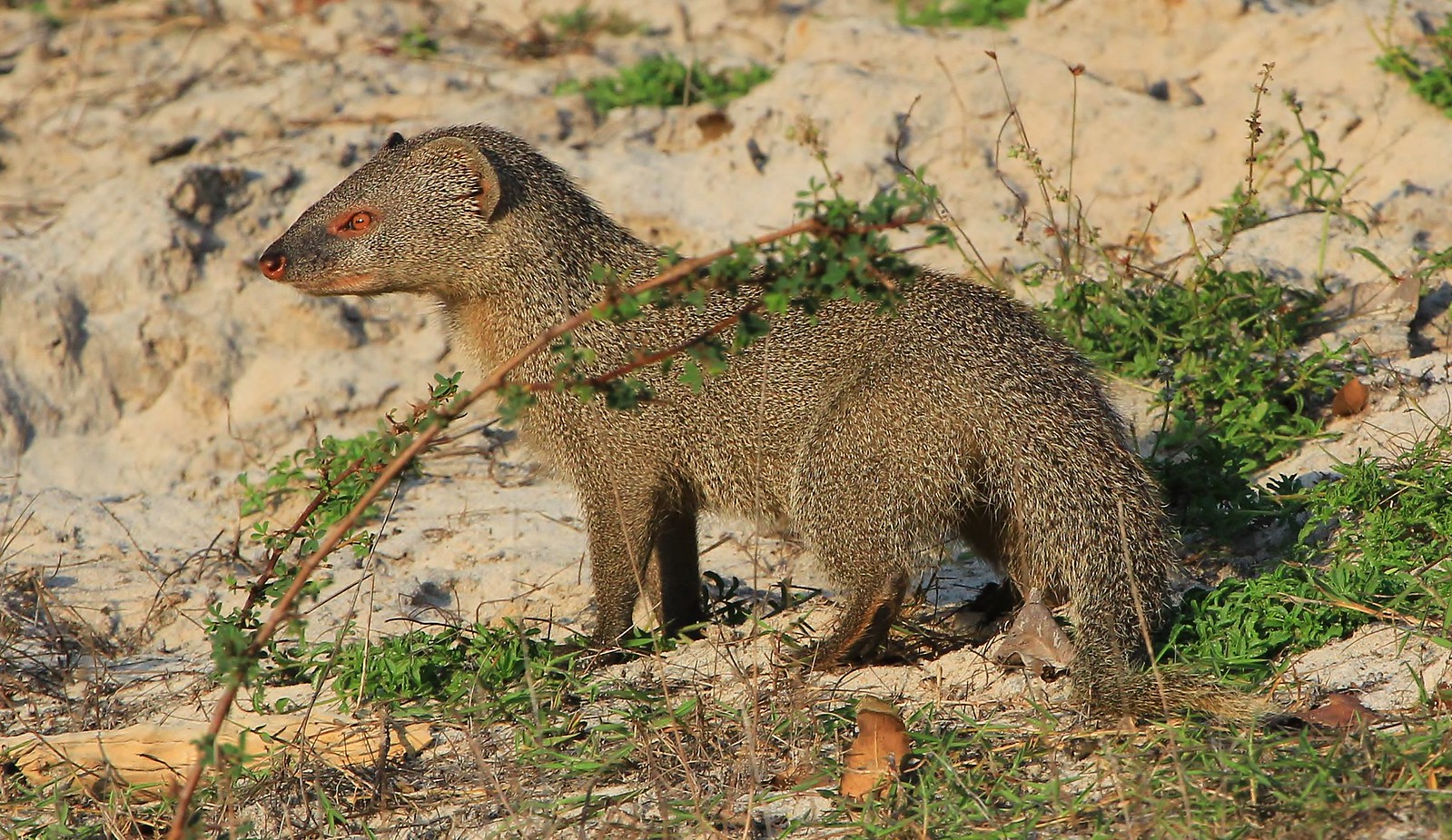

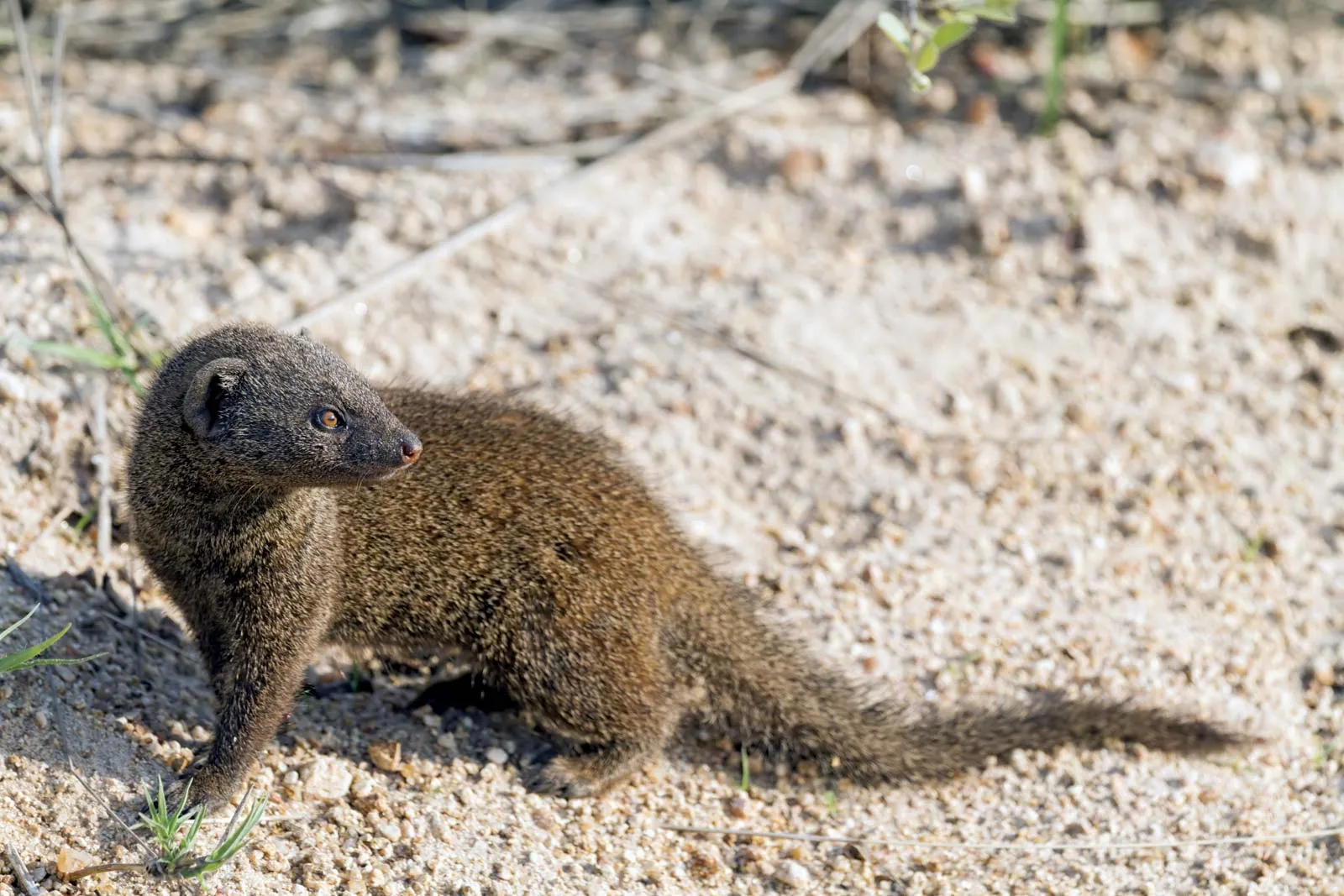
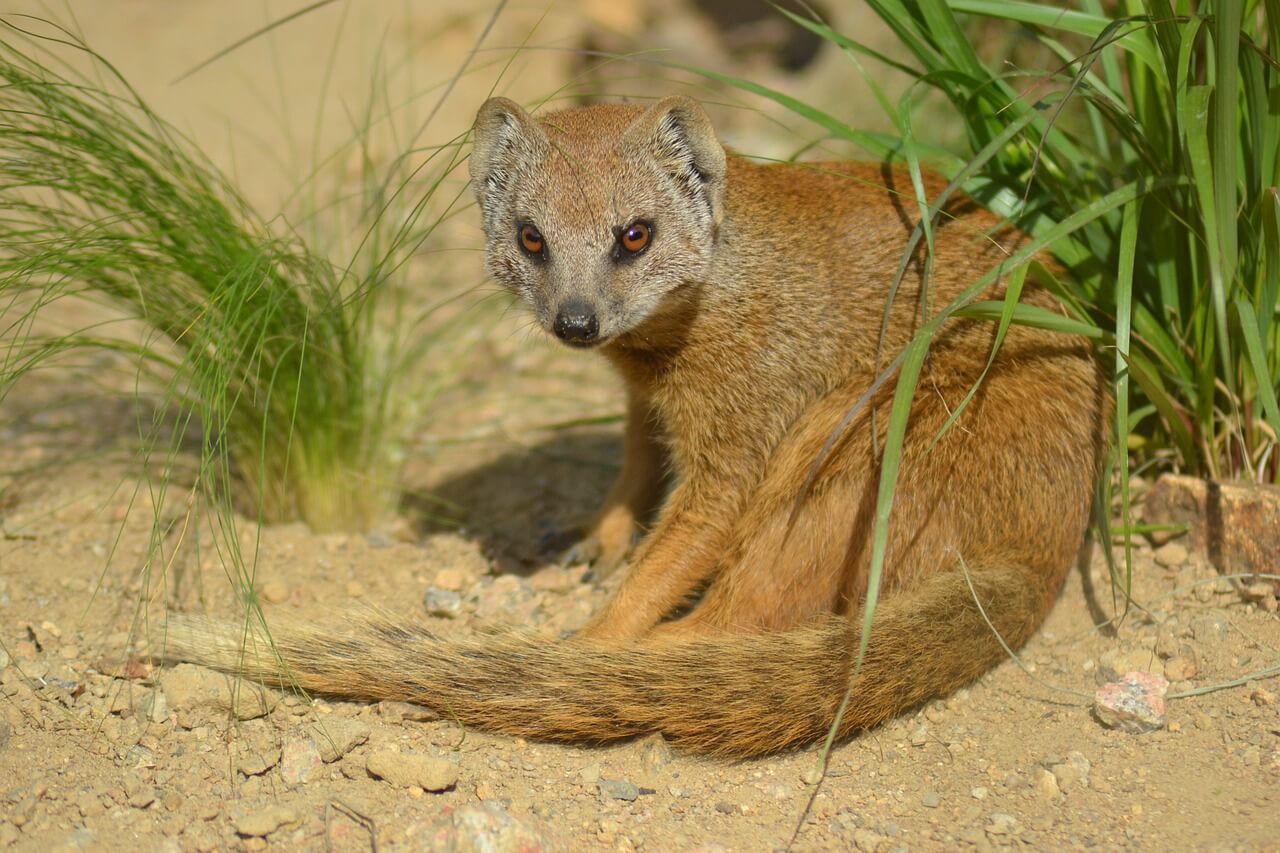
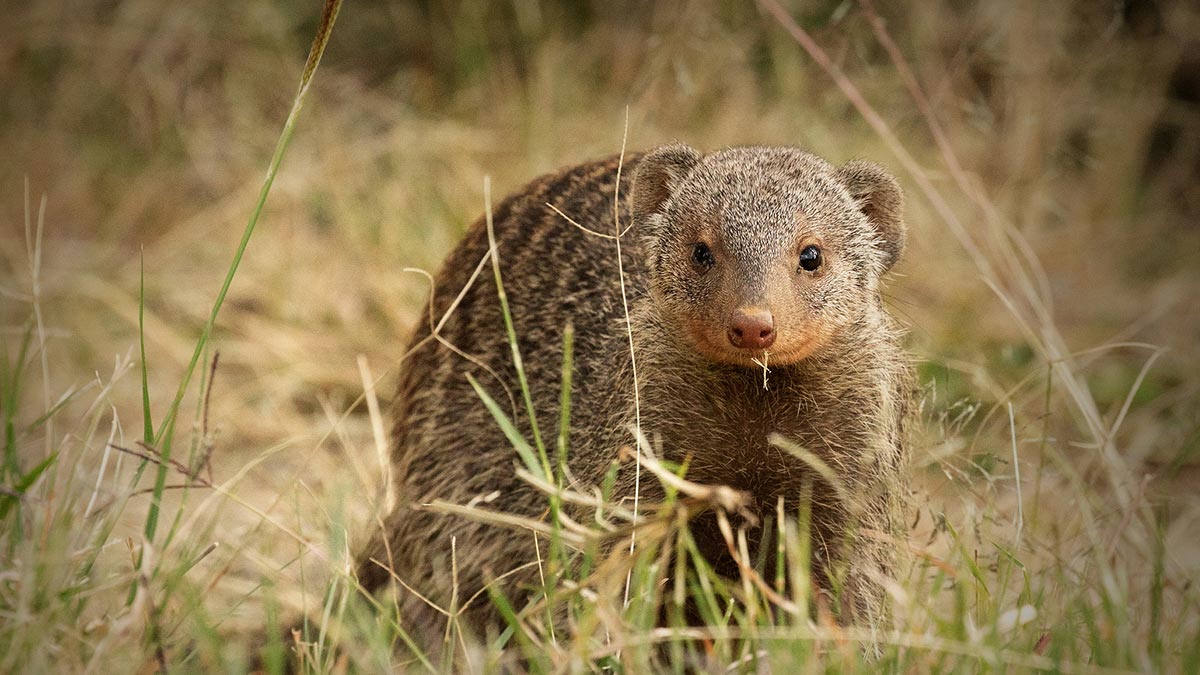

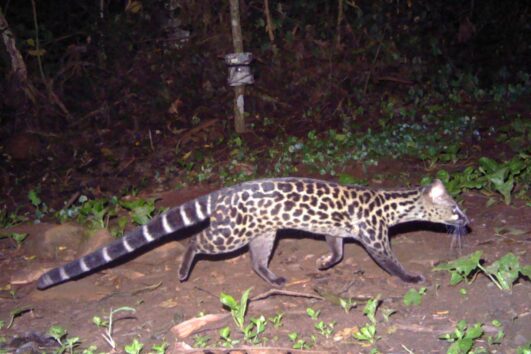
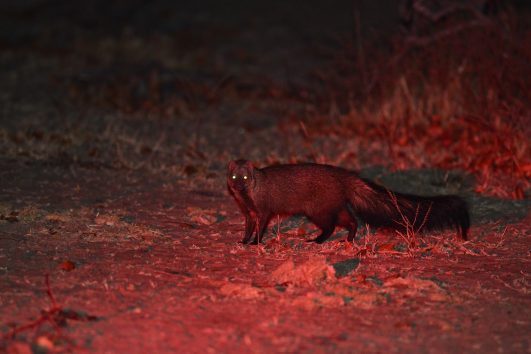
Tour Reviews
There are no reviews yet.
Leave a Review